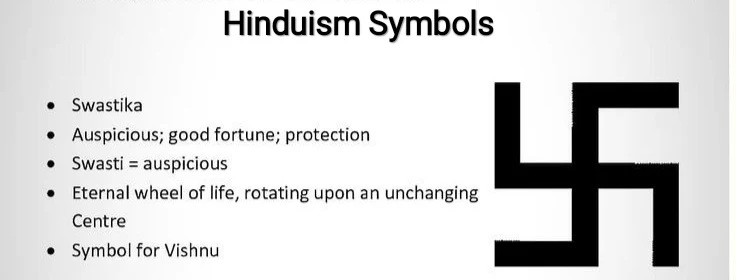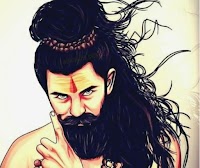Table Of Content (toc)
Hindusim
Hinduism is one of the world's oldest and most diverse religions, with a rich history and culture. The Hindu symbol is an important part of Hinduism, and is used to represent the religion around the world.
Hinduism Beliefs
One of the most central Hinduism beliefs is reincarnation. This belief holds that after death, the soul goes into another body, and that the soul is reborn over and over again until it finally reaches liberation. Dharma Dharma is another key concept in Hinduism, and it refers to the order and balance of the universe. Hindus believe that it is each person's duty to uphold dharma in their own life. Karma Karma is perhaps one of the best-known Hinduism beliefs.
Hinduism Symbols
Hinduism has a rich history and a complex set of beliefs. One of the most well-known symbols of Hinduism is the om symbol. This symbol is said to represent the universe itself, and is considered to be extremely powerful. It is often used in meditation, and is said to bring peace and harmony to those who meditate on it. In this article, we will take a closer look at the history and meaning of the Hindu om symbol, and discuss how you can use it to improve your own spiritual practice.
Om Symbol
Aum, the perfect symbol of Hinduism The most perfect symbol of Hinduism is Aum. Aum is the primordial sound from which the universe emerged. It is the sound of the divine. Aum is said to be the essence of all mantras. Aum is composed of three sounds: a, u, and m. The three sounds represent the waking, dreaming, and deep sleep states of consciousness. Aum also represents the three universal qualities of all existence: creation, preservation, and destruction. Aum is said to be the most powerful mantra in Hinduism. Chanting Aum brings one into harmony with the entire universe.
The Swastika
The swastika is probably the most well-known Hindu symbol, and it is almost universally recognized as a representation of Hinduism. The word swastika comes from the Sanskrit word svastika, which means "good fortune." The swastika is a sacred symbol in Hinduism and is often used to represent the presence of the divine. It is often used to indicate the four directions: north, south, east, and west. The Om Symbol The Om symbol is another highly important symbol in Hinduism. It is considered to be the primordial sound from which all other sounds are created.
Founder of Hinduism
The founder of Hinduism is unknown, but the religion is thought to date back to around 1500 BC. Hinduism is based on the belief in a single, all-encompassing reality called Brahman. This reality is made up of multiple elements, including gods and goddesses who represent different aspects of life. Hindus also believe in reincarnation, the cycle of death and rebirth.
Hinduism Gods
From the Vedas to the Puranas, Hinduism is rich in mythology and legends. This article provides an overview of some of the most popular hindu gods. There are innumerable Hindu gods and goddesses, each with their own complex mythology and legend. However, many of the most popular gods are those who feature in the Vedas, the oldest Hindu scriptures. Other popular gods include Vishnu, Shiva, and Ganesh. Vedic Gods The Vedas are the oldest Hindu scriptures, dating back to around 1500-1200 BC. The Vedas are a collection of hymns and chants which were used by the priests during religious ceremonies. The Vedic gods are the pantheon of gods who feature in these earliest scriptures. The most important Vedic god is Indra, the god of thunder and war.
Hinduism Caste System
The Hindu caste system is a social hierarchy that has been in place in India for thousands of years. It is based on the belief that people are born into a specific caste, or social class, and that their occupation and social status are predetermined by their birth. There are four main castes in Hinduism: Brahmins, Kshatriyas, Vaishyas, and Shudras. Brahmins are the highest caste, and Shudras are the lowest.
Within each caste there are thousands of sub-castes, which can be further subdivided into occupational groups. The Hindu caste system is deeply entrenched in Indian society and is still practiced today. However, it is coming under increasing criticism from modern-day Hindus who believe that it is unfair and discriminatory.
Hinduism Holy Books
The Vedas, Samhitas, Brahmanas, Aranyakas, and Upanishads are the foundational texts of Hinduism. They are also called the Sruti literature, meaning "what is heard." These texts were transmitted orally for centuries before being written down.
The Rig Veda is the oldest of the Hindu scriptures, and is thought to date back to around 1700 BC. It contains hymns and mantras that were used by the Vedic priests in their rituals. The Mahabharata is a long epic poem that tells the story of the Kuru dynasty, as well as the battle between the Pandavas and the Kauravas. It is thought to have been written between 400 BC and 400 AD. The Bhagavad Gita is a section of the Mahabharata that is often considered to be a separate holy book.
Lord Shiva - Destroyer
The Hindu god Shiva is one of the most complex and fascinating deities in the Hindu pantheon. Shiva is the god of transformation, destruction, and renewal, and is said to be the creator and destroyer of the universe. In this article, we will explore the mythology and symbolism of Shiva, and examine his role in Hinduism and Indian culture.
Lord Vishnu - Operator
Vishnu is the preserver of the universe in the Hindu pantheon. He is the god of protection, preservation, and restoration. Vishnu is also associated with mercy, compassion, and love. Vishnu is often depicted holding a conch shell and a discus, or a mace. He also has a sacred bird, the Garuda, at his side. Vishnu is usually shown with four arms, although he can have as many as ten. In Hindu mythology, Vishnu is the second member of the Trimurti, or triad of gods. Brahma is the creator of the universe and Shiva destroys it. Vishnu preservers and recycles it. Vishnu has many incarnations, or avatars. The most famous is Rama, from the epic poem Ramayana.
Lord Brahma - Generator
The Hindu god Brahma is the creator of the universe, and is often depicted with four heads. Brahma is considered one of the most important gods in the Hindu pantheon, and is said to be the ancestor of all humans. Brahma is usually worshipped alongside his consort, Saraswati, and his sons, the god Vishnu and the goddess Lakshmi. He is often represented as holding a lotus flower, which is the symbol of creation. Brahma is usually worshipped in temples dedicated to him, and offerings of flowers and fruits are made to him. Prayers are also said to him in order to gain blessings and wisdom.
Avatar in Hinduism
Lord Vishnu avatar is one of the most popular Hindu gods. He is the preserver of the universe and is responsible for ensuring that balance is maintained. Lord Vishnu is often depicted holding a conch shell and a discus. He is also associated with the color blue. Many Hindus believe that Lord Vishnu will eventually reincarnate himself as the Kalki avatar, who will end the current age of darkness and destruction and usher in a new golden age.









![[PDF] গরুড় পুরাণ - বাংলা pdf download](https://blogger.googleusercontent.com/img/b/R29vZ2xl/AVvXsEgrhLFjrRhWXs07js3VvMvlAMevJv79R9K7kx5WJcg0ktCbYITSH7QWE-IUnJIjQQrwVxgUGueX-yjTtMritAISGfnaudiGeJ8Ctz1Y7ddpyy08QLSDHE3eq57_-nIKuQSXSxNbUQRuNU3t-efIZq7joIyHlRMO478xW7S9kSG3aHu1PfQSsOnW5v2Y/w74-h74-p-k-no-nu/16539208639591465781064618891590.webp)

Jay Hind ❤️
ReplyDelete